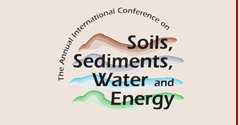Article Title
Overview Of Two Large-Scale Residential Sub-Slab Depressurization System Installation Programs
Abstract
Sub-slab depressurization (SSD) systems, commonly used to mitigate radon, create a vacuum beneath a building to prevent soil gas from entering the building as a result of pressure gradients that naturally exist between the building and the sub-slab region; the extracted soil gas is then vented directly to the atmosphere. This paper describes two large-scale residential SSD system installation case studies. The SSD systems were designed and installed to mitigate intrusion of soil gas, which contained low levels of volatile organic compounds, into (1) 100+ individual houses and (2) several buildings in a multi-structure condominium complex. The SSD installation methodology consisted of the following components: stakeholder involvement, site assessment, feasibility study, pilot testing/design, installation, performance testing, and operations & maintenance. Public meetings were held and homeowner feedback was elicited to achieve an end product that not only mitigated vapor intrusion, but also was acceptable to the homeowner. The system design process incorporated the results of site-specific assessments and field pilot testing. These systems were installed in a design-build fashion using a variety of construction techniques. Following installation, the SSD systems were performance tested to ensure that the resulting suction field encompassed the entire sub-slab area. Examples of the SSD system installations are presented. SSD system designs/components and construction techniques, issues, and challenges specific to the two case studies are discussed. System performance data and lessons learned from the SSD installations also are presented. In addition, a comparison of the operation of the engineered SSD systems to several radon mitigation systems previously installed using typical radon industry techniques is conducted to reveal some interesting results.
Recommended Citation
Hellerich, Lucas Ph.D., P.E.; Pocsi, Erzsebet; Baker, William IV; Curran, Ronald; and Stevens, Graham
(2010)
"Overview Of Two Large-Scale Residential Sub-Slab Depressurization System Installation Programs,"
Proceedings of the Annual International Conference on Soils, Sediments, Water and Energy: Vol. 11, Article 18.
Available at:
https://scholarworks.umass.edu/soilsproceedings/vol11/iss1/18
